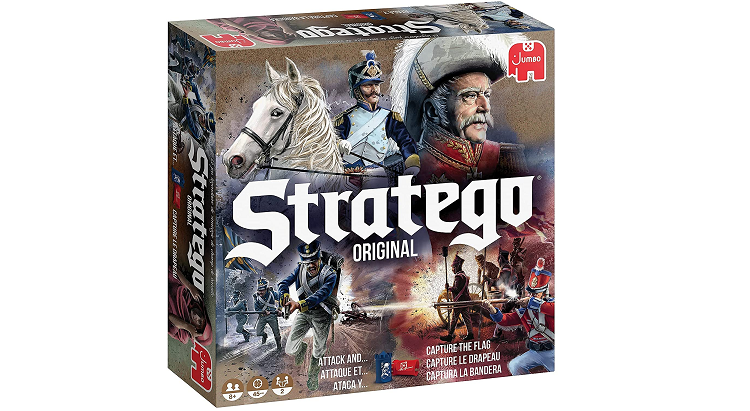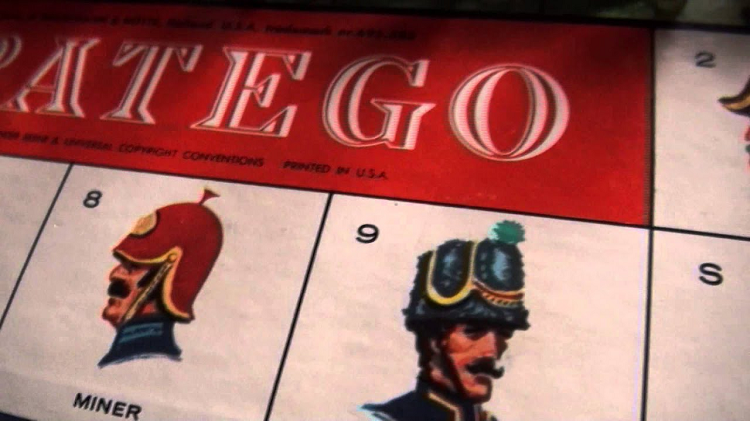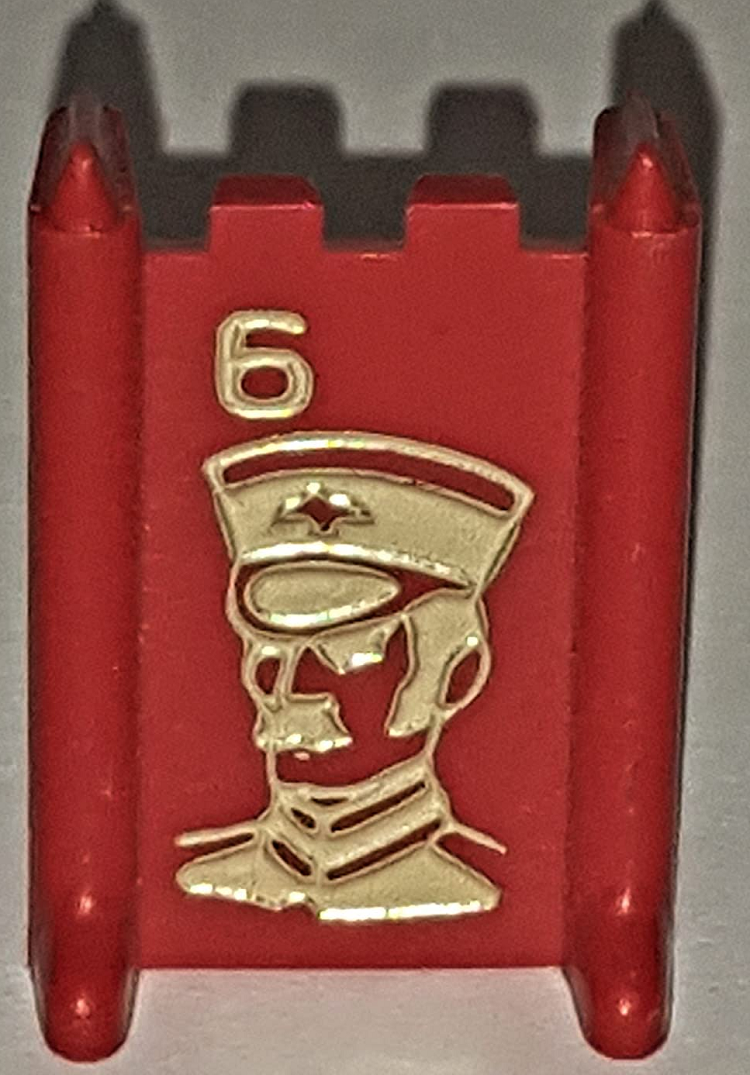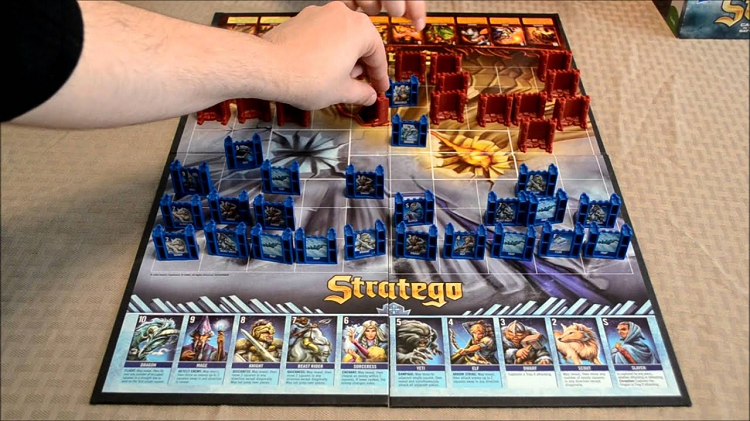Stratego is an exciting strategic board game filled with action and suspense. But with so many different pieces involved, learning how they work within the context of the game can be challenging.
Fortunately, this guide is here to help you on the road to becoming a Stratego master!
Stratego: An Overview
As far as board games go, Stratego is a pretty thrilling one if you’re interested in theoretical warfare.
It’s a two-player game recommended for people eight years and older. However, due to small parts which present choking hazards, the game isn’t for children under three years old.
You can find out the most recent price of Stratego and purchase the game here.
If you have a younger child, why not check out our guides to the best games for three-year-olds and four-year-olds?
Stratego’s board becomes a battlefield, and the pieces represent opposing armies. The original version, which featured extensive Napoleonic imagery, was manufactured in the Netherlands by a company called Jumbo. It was trademarked in the US in 1960.
The Stratego box reads: “The gameboard is your battlefield. You have an army of men at your disposal and six bombs. Your mission – protect your flag and capture your opponent’s flag.”
Origins of Stratego
Interestingly, the origins of Stratego can be traced back to a traditional Chinese board game called Jungle, also known as Game of the Fighting Animals or Animal Chess.
The pieces used in Jungle are animals rather than soldiers, and they all have different ranks. Likewise, pieces are not hidden from the opponent in Jungle, whereas they are in Stratego.
Stratego was present in Europe before World War One in a more recognizable form, where it was called L’attaque. There are subtle differences between the two, but they share many similarities.
The most recent version, which originated in the Netherlands, originally featured printed cardboard pieces. These became wooden after World War Two, and it wasn’t until the 1960s that the pieces were made from plastic.
Arguably, one of the greatest things about Stratego is its versatility. Many cultures have adapted it over the years, with Europeans adding cylindrical castle-shaped pieces and Americans adding colorful stickers.
Versions like this are still available for purchase online. For example, there is a medieval-themed edition called Stratego: Conquest.
More recently, an Assassin’s Creed version of the game was created and has proved very popular. In addition, there is a Lord of the Rings version and a sci-fi version available on Amazon as well.
Another classic game with an interesting and lengthy history is Monopoly – find out how to play it in our guide.
Stratego Pieces Explained
Traditional versions of Stratego contain 80 pieces in total, with 40 per player, but there are other 40 piece and 20 piece variations. However, this guide will focus on the traditional game.
For any long-time fans of Stratego, it’s worth knowing that you can often find vintage Stratego pieces for sale on Amazon, such as this 1986 blue bomb or this 1961-75 red scout.
The 40 pieces are as follows (ranked from low to high):
- Flag (x1)
- Bomb (x6)
- Spy (x1)
- Scout (x8)
- Miner (x5)
- Sergeant (x4)
- Lieutenant (x4)
- Captain (x5)
- Major (x3)
- Colonel (x2)
- General (x1)
- Marshall (x1)
Flag
The flag is a crucial piece because the aim of the game is for each player to defend their own flag and capture their opponent’s.
It is an immovable piece; capturing it wins the game.
Bomb
Like the flag, bombs are also immovable pieces. They are captured by miners.
Marshal
The marshal is the strongest piece on the board, but it is vulnerable to the spy. It can be captured, but only if the spy attacks first.
A marshal (number 10) outranks a general (number 9) and all lower-ranking pieces.
It can be used to attack 25-34 of your opponent’s pieces.
Strategy
- Avoid attacking low-ranking pieces using your marshal, as this will expose it.
- The ideal position is behind a lake
General
As you might have guessed, the general is the second most powerful piece in the game. It can be defeated by a bomb, marshal, or another general and can attack 33 of your opponent’s pieces.
Strategy
- Use to protect the spy – if the opponent’s marshal defeats it, their marshal can be defeated.
- If positioned away from the spy, use another piece as a bluff
Scout
Scouts are generally weak pieces, but they should not be underestimated in their value. They are excellent for detecting your opponent’s manpower and gauging the strategic landscape of the board.
Scouts are the only pieces that are permitted to both move and attack on the same turn. They can move forward, backward, or sideways in any number of open spaces.
Strategy
- Use for 4 different things: scouting, bluffing, spy scouting, and flag scouting.
- Save some scouts for each objective as they will come in useful later in the game.
Miner
Miners are crucial for disarming enemy bombs, of which there are 6 in the game.
The special attack privilege belonging to Miners is that when they strike a bomb, it is diffused; if any other piece on the board hits a bomb, the piece is lost.
Strategy
- Save some miners for later in the game.
- Miners can be used for scouting if your strategy is to capture all your opponent’s pieces.
Spy
If any piece captures the spy, it must be removed from the board. However, it has a special attack privilege; it is the only piece that can capture a marshal (providing the spy attacks first).
Protecting your spy is a crucial part of the game.
Strategy
- The spy doesn’t have to be placed behind a general; a colonel could also work in this position.
- You can use multiple high-ranking pieces to defend your spy – a tactic that works well until they are needed elsewhere.
Sergeant
Sergeants are the least valuable and useful pieces in Stratego. This is because they are the lowest ranking pieces that don’t have a special ability.
Strategy
- Sergeants tend to be placed in the front row.
- They are often positioned adjacent to bombs to defeat any miners that attempt to diffuse them.
- They make excellent scouts at the beginning of the game
Lieutenant
Lieutenants are medium-ranking pieces. They are capable of defeating roughly half of your opponent’s pieces.
Strategy
- One of the greatest strengths of Lieutenants is their versatility; they can be used for scouting, bluffing, or luring other pieces.
- Aim to keep your lieutenants away from places where they might be trapped
Captain
Captains sit roughly in the middle of all the pieces in terms of rank and can attack, for example, lieutenants.
Strategy
- Use captains to protect more important pieces on the board
Major
Majors tend to be attacked by generals and colonels.
Strategy
- Most people will try to protect their majors with generals and colonels – try to use a different strategy to throw your opponent off.
Colonel
Colonels are the third-highest ranking piece, and you only get 2 of them. They can attack 24-32 of your opponent’s pieces.
Strategy
- Try to keep your colonels somewhere close to the front
Stratego Strategy for Beginners
Now you understand the basics of how to play Stratego and how each piece works within the context of the game, it’s time to learn some simple strategy.
Scouting
Scouting is the tactical process by which you reveal the rank of your opponent’s pieces using your own low-ranking ones, such as miners and sergeants.
Bluffing
This is one of the most useful tactics you can use in a game of Stratego. These are the most important types of bluffing:
- Bomb/flag bluffing – you can bluff that non-bomb pieces are bombs to make your opponent waste their minors. To do this, simply avoid moving the relevant piece.
- Bluffing with the spy – send your spy to a known high-ranking piece like a colonel, causing your opponent to send their marshal.
- Bluffing with the marshal – go after a lieutenant or sergeant to pretend your marshal is a lower-ranking piece
- Miner bluffing – send your miner after any moveable piece in the way, making your opponent think it is high-ranking.
Trapping
There are two main types of trapping: lure trapping and bomb trapping.
Lure traps are made during the setup phase by placing pieces in a strategic position on the board. The most effective lure traps tend to have two higher-ranking pieces behind the bait.
Bomb traps, on the other hand, rely on a formation of bombs to trap your opponent’s pieces so they can’t move without blowing up.
Setup
Setting up the game can be daunting when you’re not yet confident with creating and implementing a strategy, but the most important thing to remember is that setting up the board well is a crucial step towards success.
The Dos
- Do keep 3 miners (if not more) in the back 2 rows
- Do place bombs around your flag
- Do back up front row pieces with other pieces that are 3-4 ranks higher
The Don’ts
- Don’t bomb off-center
- Don’t have more than 2 high bombs
- Don’t put all 3 majors in the front 2 rows
Stratego Advice
Finally, here are a few tips and tricks that I find most helpful when playing Stratego.
Don’t Give Up
It’s easy to get frustrated when you lose a marshal or general, but persisting with the game is the best thing you can do as a beginner. It will help you learn and progress much faster.
Bomb in Your Flag
Beginners tend not to be very protective of their miners, so by bombing in your flag; you have a good chance of winning or at least tying.
Watch Games
YouTube is a valuable resource that you should use to strengthen your skills and understanding of the game. By watching people play who are better than you, you can learn new techniques.
Frequently Asked Questions
Question: What are the Rules for the Spy in Stratego?
Answer: If the spy attacks any officer (excluding the marshal), the spy is defeated; if any officer attacks the spy, it is defeated.
Question: Can You Move Backward in Stratego?
Answer: Most pieces are able to move only one square at a time, either forward, backward, or sideways.
Question: Can Stratego End in a Draw?
Answer: It’s possible for Stratego to end in a draw if, at the end of the official playing time, the game has not been won, and both players agree to call it a draw.
Question: What Age Range is Stratego Suitable For?
Answer: Since Stratego involves a considerable amount of strategy, it’s recommended for people eight years and older. However, if your child is younger, we have a guide to the best games for three-year-olds and four-year-olds.
Question: How Old is Stratego?
Answer: Stratego has been around for a very long time in various forms, but the modern version can be dated back to approximately 1946.
Question: Are there Any Other Games Like Stratego?
Answer: If you’re a fan of strategy-based games, it’s definitely worth checking out Settlers of Catan. Alternatively, if you like the idea of adventure-based games, Sleeping Gods is an excellent choice filled with a huge amount of content to explore.
Wrapping It Up – Where Can I Buy Stratego?
If you’re ready to get going with Stratego, you can purchase Stratego from Amazon here.
Recommended reads:
- Stratego Pieces Explained – Must-Know Facts - February 28, 2023
- Wahoo Board Game Guide – AKA Aggravation Guide - February 22, 2023
- Pokemon Monopoly Guide - February 22, 2023







